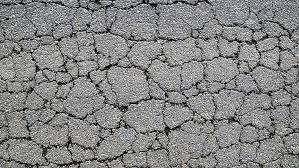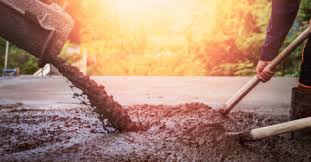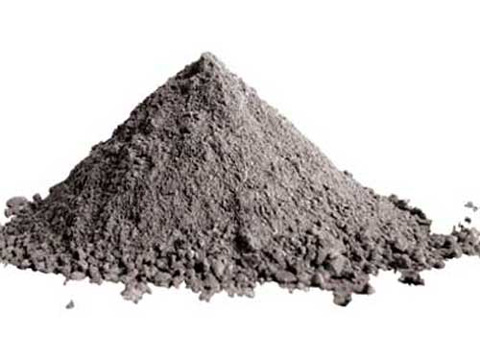Introduction:
Even though concrete is one of the most durable building materials, its strength and durability can be affected by many things over time. The amount of air in the mix may be the hardest to control out of all these things. Having air in concrete is important to keep projects inside and out from going wrong. Even when air entrainers and detainers are used at the batch plant, loads are rejected on the job site because there is too much or not enough air. Knowing what can change the amount of air in a mix while it is in transit can help ready-mix operators make sure their mixes meet job requirements.
Introduction
In the 21st century, everything has started to speed up, even in the construction industry too. The construction activities are speeding up by replacing the manual works with automatic machines. Likewise, in cement mixing, too, there has been rapid development. Instead of mixing on-site, a ready-to-use cement mix is being on the site so that no time is wasted in proportioning the cement to the desired strength.
Instead of on a job site, ready-mix concrete is made in a plant according to a predetermined mix design. Manufacturers mix sand, gravel, cement, and water depending on the project requirements before delivering the mixture to the site.
There are three types of ready-mix concrete: transit-mix concrete, central mixed concrete, and shrink-mix concrete.
Introduction:
Concrete is a building material made of cement, aggregates (rock and sand), water, and additives (chemicals that enhance or modify the properties of concrete). There are a lot of chemicals used in construction now. From concrete admixtures to sealants, grouts, bonding agents, and waterproofing chemicals, the construction chemicals industry has a wide range of products. The construction industry uses these chemicals in a lot of different ways. These construction chemicals can make concrete stronger, and when used in different ways and amounts, they can also help get around many other problems. One chemical that is used in concrete is a “bonding agent.” This article will discuss concrete bonding agents and different types of concrete bonding agents.
Introduction:
When the top layer of concrete shrinks, random cracks or fissures appear on the surface, known as crazing in concrete floors; conditions and curing techniques used when the concrete is set out, as well as how it is completed, are to blame. They cause the immediate surface to shrink differently than the underlying concrete because they are linked to early surface drying or chilling. When the surface was exposed during placement to low humidity, high air or concrete temperature, scorching sun, or any combination of these, the concrete surface dried up, which is what caused crazing.

Fig1: Crazing of Concrete
Courtesy: engineeringnews.co.za
Read More
Introduction:
Hot weather can be defined as any time when the temperature is high enough that extra care must be taken to ensure that concrete is handled, put down, finished, and allowed to cure properly. Most problems with hot weather happen in the summer, but high winds, low relative humidity, and solar radiation can happen at any time, especially in arid or tropical climates. When it’s hot outside, the moisture on the surface of the concrete can evaporate quickly, which can cause several problems. High relative humidity generally reduces the effects of high temperature.

Fig: Hot Weather Concreting
Courtesy: carboncure.com
A world that is always changing necessitates the development of new construction methods. Concrete is one of the most extensively utilized construction materials today. It is due to the wide range of uses it provides and its behavior, strength, affordability, durability, and adaptability. As a result, construction workers trust concrete as a safe, robust, and simple material. It’s used in a wide range of structures (from single-family homes to multi-story office buildings) and infrastructure (roads, bridges, etc.). Concrete is used to construct foundations, columns, beams, slabs, and other load-bearing structures.
What is Concrete?
Concrete is a basic material used in civil engineering, such as constructing structures. Concrete is cement, sand, and fine and coarse rock aggregate mixture. The cement works as a binder, holding the components together as it sets and hardens over time. Other types of binding materials are employed in addition to cement, such as lime concrete, bitumen, asphalt, etc.
Introduction:
Depending on the case, you may need to be more or less practical. Deep beams, thin water-holding structures with a lot of steel support, connections between columns and beams, pouring concrete, pumping concrete, and working in hot weather all require a high level of workability in the concrete. Adding water is the most common form of abuse, usually done without any engineering on the spot. Adding water to concrete makes it more flexible, but it needs to be easier to work with. It won’t make a mixture more even or regular. Instead, it makes it more likely that people will fight and die. Plasticizers make concrete stronger and last longer by reducing the amount of water and cement needed to reach a certain level of workability. Since the heat of hydration of mass concrete goes down when the cement weight goes down, plasticizers can do this.
Introduction
Durability of concrete implies that a concrete can withstand any harsh environment without undergoing any change in structure. IS 456-2000 has specified norms that address the issues of the durability of concrete. Usually, a concrete can stand severe environment but when certain conditions like sea water exposure or sulphate and chloride attack is encountered with concrete then it becomes difficult for concrete to withstand such exposures. In such cases, along with concrete certain additives like accelerators or admixtures are required to add with concrete to make it durable. All these will be discussed in details here.
Introduction:
In the modern world, concrete is the most popular building material for many different types of buildings. Concrete pavements are one of the essential components of a construction site. Concrete slabs are made and put in place to make a solid pavement that can handle the traffic. Construction workers use dowel bars to ensure these pavements are strong and stable. These bars help make sure that the concrete slabs are mechanically connected in the right way.
Introduction:
Improvements in building materials are constantly being made. The construction industry relies on wide concrete varieties for its many varied projects. Various constructions use refractory concrete to withstand high temperatures. Normal concrete melts at a particular temperature. High-alumina cement is often used to make refractory concrete, which can withstand high temperatures, along with aggregates that can also withstand heat.
 Fig: Refractory Concrete
Fig: Refractory Concrete
Courtesy: monolithicrefractoriesonline.com
